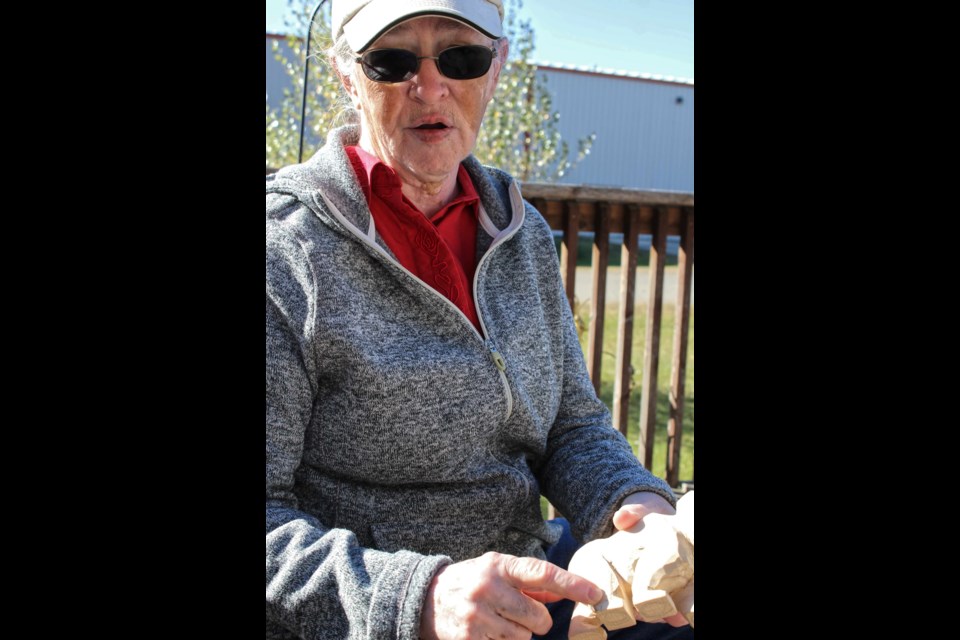Carving artist Judy Perkins does beautiful work. She’s has just held two carving classes in Hamiota and plans to continue with the Hamiota Carving Club which is open to anyone from the wider area as well.
Perkins’ fine art has been displayed in Hamiota’s Heritage Arts Centre, home of the Mid-West Arts Council serving Miniota, Hamiota and area.
The famous artist and sculptor of the 16th century, Michelangelo, described the process of carving angels as ‘setting them free’ from the material that they were trapped inside.
Perkins restates that principle saying the craft of carving is deciding what stays and what goes from the raw piece she begins with.
In her carving class she guides carvers through the steps to make a roughed out wooden shape into a black bear. She describes the process: “The first thing they have to do is put all the reference lines on.” Angular grid lines mark the placement of ears and legs and “the separation between the belly and the legs so they know how far up to cut.” From the leg, the foot needs to be defined.
When the shape of the bear is completed, Perkins discourages over sanding the piece. Carving strokes create texture. In fact, using a woodburning tool she often ads texture and definition to fur, feathers, faces and other features of her carvings.
“You’ll still see some of the grain of the wood and you want to be sure you still see some of the carving strokes.
“I’ll show them how to layer their paint because a black bear is not pure black. The face is a lighter tan colour, the nose is brown….”
She presents a smooth grey narwhal piece, soapstone mounted on driftwood. “My soapstone comes from Thompson, Manitoba. It was scrap material out of the [former] Inco mine.” Pointing to the single tusk, “This is a piece of whale bone. It was a gift from a friend who does another type of art.”
The work is tagged and mounted and even that has a history. “The writing is on an old ivory piano key and this is a piece of wood that came from the thrift shop.” She surmised it was once a souvenir from someone’s travels.
Her home is an artist’s display. There’s personality to her work particularly seen in comic little characters, crafted from golf balls.
She points to a hawk. “He was a class with Bob Lavender.” Lavender, an artist from Saskatoon is a world class competitor who taught a two-day seminar where Perkins picked up knowledge of finishing; painting in particular.
“The carving itself is not extensive, it’s the painting… to bring out the layering of the painting. To really know what you’re trying to accomplish and working it step by step.”
While most pieces are basswood, she also works with a gnarly medium - cottonwood bark: “You play with it. Do you see a house and trees, or do you see faces? So then if you see faces … you leave as much natural as you can and still try and get out what you can.”
Judy and her husband Brian came to Hamiota three years ago. She brought her 17-year carving hobby with her. Delving into drawing and painting earlier in her life, Perkins craved the 3-D effect that carving yields, and the palm tool work that she prefers.
She will occasionally take on a commission, and has sold a few pieces, but that’s not her goal. “I carve for me,” she says. Some of her pieces become gifts. As for marketing her work, Perkins says it’s hard to put a price on an artist’s hours of work.




